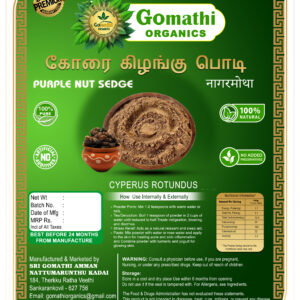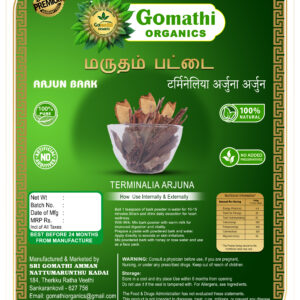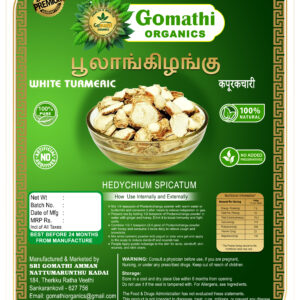What is Aalam Pattai (Banyan Bark)?
🌳 The Aalam tree (Ficus benghalensis), commonly known as the Banyan tree, is a sacred and medicinal tree in Ayurveda, Siddha, and Unani medicine. It is widely known for its rejuvenating, anti-inflammatory, and astringent properties.
🌳 The bark of the Banyan tree has been traditionally used to treat diabetes, skin diseases, digestive issues, and joint pain. It is also beneficial for wound healing, boosting immunity, and improving reproductive health.
🌳 Native to India and tropical Asia, the Banyan tree is regarded as the national tree of India and is often planted near temples and sacred sites.
Description of Aalam Pattai (Banyan Bark) Plant
🌿 Ficus benghalensis is a large, evergreen tree with aerial prop roots, thick branches, and a wide-spreading crown.
🌿 The bark is smooth, grayish-brown, and rich in bioactive compounds like tannins, flavonoids, and alkaloids.
🌿 The tree produces large, leathery, dark green leaves with prominent veins.
🌿 It bears small, reddish figs that are edible and attract birds and wildlife.
🌿 The tree spreads through aerial roots, which grow downward from branches and form secondary trunks.
Morphological Characteristics of Aalam Pattai (Banyan Bark)
🌿 The Banyan tree can grow up to 20–30 meters in height, with a sprawling canopy covering large areas.
🌿 The bark is thick, brownish-gray, slightly rough, and rich in medicinal properties.
🌿 Leaves are broad, ovate, and dark green, with a smooth, glossy surface.
🌿 The tree produces small, red fig-like fruits, which are mildly sweet and consumed in traditional medicine.
🌿 Aerial roots develop from branches and eventually become new trunks, allowing the tree to expand indefinitely.
🌿 The bark contains tannins, flavonoids, and saponins, contributing to its anti-diabetic, anti-inflammatory, and wound-healing benefits.
Habitat of Aalam Pattai (Banyan Bark) – Ficus benghalensis
🌿 Ficus benghalensis is native to India, Sri Lanka, Pakistan, Bangladesh, and tropical Asia.
🌿 Found in forests, riverbanks, villages, and temple groves, where it is revered as a sacred tree.
🌿 Commonly found in Tamil Nadu, Kerala, Karnataka, Andhra Pradesh, Maharashtra, Gujarat, Uttar Pradesh, and Rajasthan.
🌿 The tree thrives in warm, humid, and subtropical climates but can also withstand dry conditions.
🌿 It prefers well-drained loamy soil but can grow in rocky and sandy areas.
🌿 It is a drought-resistant tree and requires minimal watering once established.
Aalam Pattai (Banyan Bark) Organic Information
🌳 100% pure and natural, free from artificial colors, chemicals, pesticides, or additives.
🌳 Sustainably harvested from mature Banyan trees, ensuring high-quality medicinal bark.
🌳 Carefully hand-processed, sun-dried, and finely ground to preserve its therapeutic potency.
🌳 Ethically sourced and eco-friendly, supporting sustainable agriculture and conservation efforts.
🌳 Used in Ayurvedic formulations, herbal decoctions, and traditional medicines for diabetes management, skin care, wound healing, and immunity boosting.
Different Language Names
⭐ Tamil: ஆலம்கட்டை (Aalam Pattai), அறசமரம் பட்டை (Arasamaram Pattai)
⭐ Hindi: पीपल की छाल (Peepal Ki Chhal)
⭐ Sanskrit: अश्वत्थ त्वक् (Ashvattha Tvak), पिप्पल त्वक् (Pippala Tvak)
⭐ Malayalam: അരയാൽ തൊലി (Arayal Tholi)
⭐ Kannada: ಅಶ್ವತ್ಥ ಮರದ ತೊಗಟೆ (Ashvattha Marada Togate)
⭐ Telugu: రావి చెట్టు తొక్క (Raavi Chettu Tokka)
⭐ Bengali: অশ্বত্থ গাছের ছাল (Ashwattha Gacher Chhal)
⭐ Marathi: पिंपळाची साल (Pimpalachi Saal)
⭐ Gujarati: પીપળ ની છાલ (Pipal Ni Chhal)
⭐ Punjabi: ਪੀਪਲ ਦੀ ਛਾਲ (Peepal Di Chhal)
⭐ Odia: ଅଶ୍ୱତ୍ଥ ଗଛ ଛାଲ (Ashwattha Gacha Chhal)
⭐ Assamese: অশ্বত্থ গছৰ ছাল (Ashwattha Gasor Chhal)
⭐ Urdu: پیپل کی چھال (Peepal Ki Chhal)
⭐ Konkani: पीपळ छाल (Pipal Chhal)
⭐ Tulu: ಅಶ್ವತ್ಥ ಸಿಪ್ಪೆ (Ashwattha Sippe)
⭐ Meitei (Manipuri): অশ্বত্থ গছৰ ছাল (Ashwattha Gachor Chhal)
⭐ Dogri: पीपल की छाल (Peepal Ki Chhal)
⭐ Kashmiri: पीपल छाल (Peepal Chhal)
⭐ Maithili: पीपल छाल (Peepal Chhal)
⭐ Chhattisgarhi: पीपल छाल (Peepal Chhal)
⭐ Rajasthani: पीपल छाल (Peepal Chhal)
⭐ Sindhi: پيب جي ڇال (Peepal Ji Chhal)
⭐ Nepali: पीपल छाल (Peepal Chhal)
⭐ Arabic: لحاء شجرة البيبل (Lihā’ Shajarat Al-Peepal)
⭐ Chinese: 菩提树皮 (Pútí Shùpí)
⭐ Malay (Malaysia): Kulit Pokok Peepal
⭐ Thai: เปลือกต้นโพ (Pluak Ton Pho)
⭐ Vietnamese: Vỏ cây Peepal
⭐ Spanish: Corteza de Peepal
⭐ French: Écorce de Peepal
⭐ Sri Lankan Sinhala: බෝ ගස් පතල (Bo Gas Patala)
⭐ Indonesian: Kulit Pohon Peepal
⭐ German: Peepal-Baumrinde
⭐ Italian: Corteccia di Peepal
⭐ Family Name: Moraceae (Mulberry family)
⭐ Botanical (Latin) Name: Ficus religiosa
⭐ Common Names: Peepal Bark, Sacred Fig Bark, Bodhi Tree Bark
Nutritional Information (per 100g)
Energy: 170-220 kcal
Carbohydrates: 30-40g
Dietary Fiber: 8-12g
Protein: 4-7g
Calcium: 120-180mg
Iron: 3-6mg
Vitamin C: 10-20mg
Phytochemicals: Tannins, Flavonoids, Alkaloids, Saponins
Nutritional Facts
✔ Supports digestive health and helps relieve constipation.
✔ Rich in antioxidants, enhancing overall immunity.
✔ Contains natural anti-inflammatory and antimicrobial properties.
✔ Helps regulate blood sugar and promotes skin health.
✔ Free from artificial colors, flavors, and preservatives.
Dosage
For Adults: 1-2 teaspoons (3-5g) per day.
For Children: ½ teaspoon (1-2g) per day.
Maximum Dosage: Do not exceed 10g per day unless recommended by a healthcare professional.
How to Consume
Internal Use
Aalam Pattai Powder with Water: Mix 1 teaspoon of powder in warm water and drink daily.
Aalam Pattai Tea: Boil 1 teaspoon of bark in water, strain, and drink.
With Honey: Mix the powder with honey and consume for added benefits.
External Use
For Skin Care: Make a paste with water or rose water and apply it to wounds, rashes, or skin irritations.
For Oral Health: Use the powder as a natural toothpowder to support oral hygiene.
How to Use & Store
✔ Store in an airtight container, away from moisture and direct sunlight.
✔ Ensure the lid is tightly closed after every use.
✔ Keep in a cool, dry place to maintain freshness and potency.
Caution to Be Taken
⚡ Consult a physician if pregnant, breastfeeding, or on medication.
⚡ Possible interactions with medications, especially those affecting digestion, blood sugar, and liver function.
⚡ Avoid excessive consumption to prevent potential toxicity or adverse effects.
⚡ Not suitable for infants or children without medical advice.
⚡ Long-term use is not recommended without professional guidance.
⚡ Always consult a healthcare provider for personalized dosage and safety considerations.
Important Tips
☀️ Start with a Low Dose 🌱: Begin with a small amount to assess tolerance.
☀️ Use in Moderation 🌿: Avoid excessive or prolonged use without guidance.
☀️ Choose High-Quality Products 🍁: Purchase from trusted sources to ensure purity and effectiveness.
☀️ Conduct a Patch Test 🍂: Always test on a small skin area before topical application.
☀️ Proper Storage Matters 🍃: Store in airtight, non-metal containers to preserve potency and freshness.
Harvesting & Manufacturing Method
☀️ Organically Sourced 🌳: Aalam Pattai (Banyan Tree Bark) is cultivated without synthetic chemicals, ensuring natural purity.
☀️ Sustainably Harvested 🌿: Collected from naturally growing banyan trees in ecologically balanced regions.
☀️ Handpicked & Sun-Dried 🌱: Dried naturally under the sun to retain its medicinal properties.
☀️ No Additives or Chemicals 🌾: Processed without artificial preservatives, maintaining its raw and authentic nature.









Reviews
There are no reviews yet.